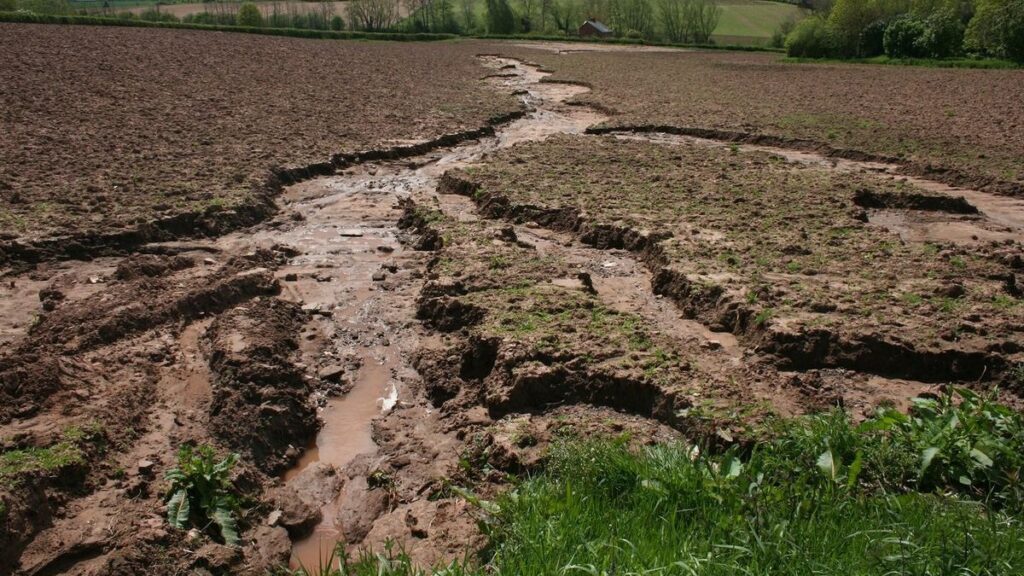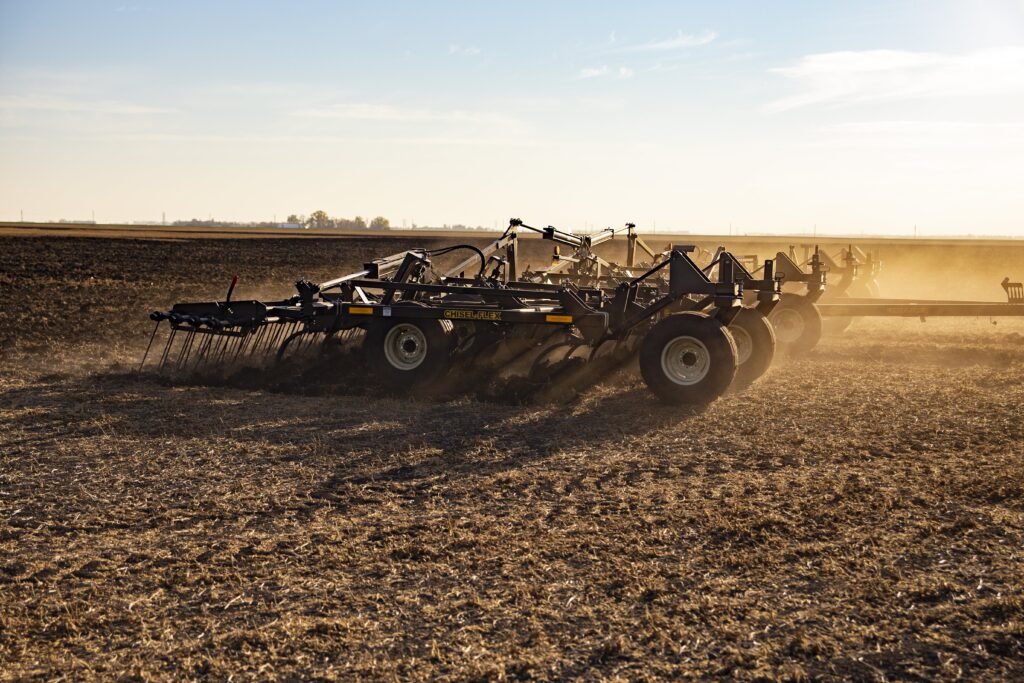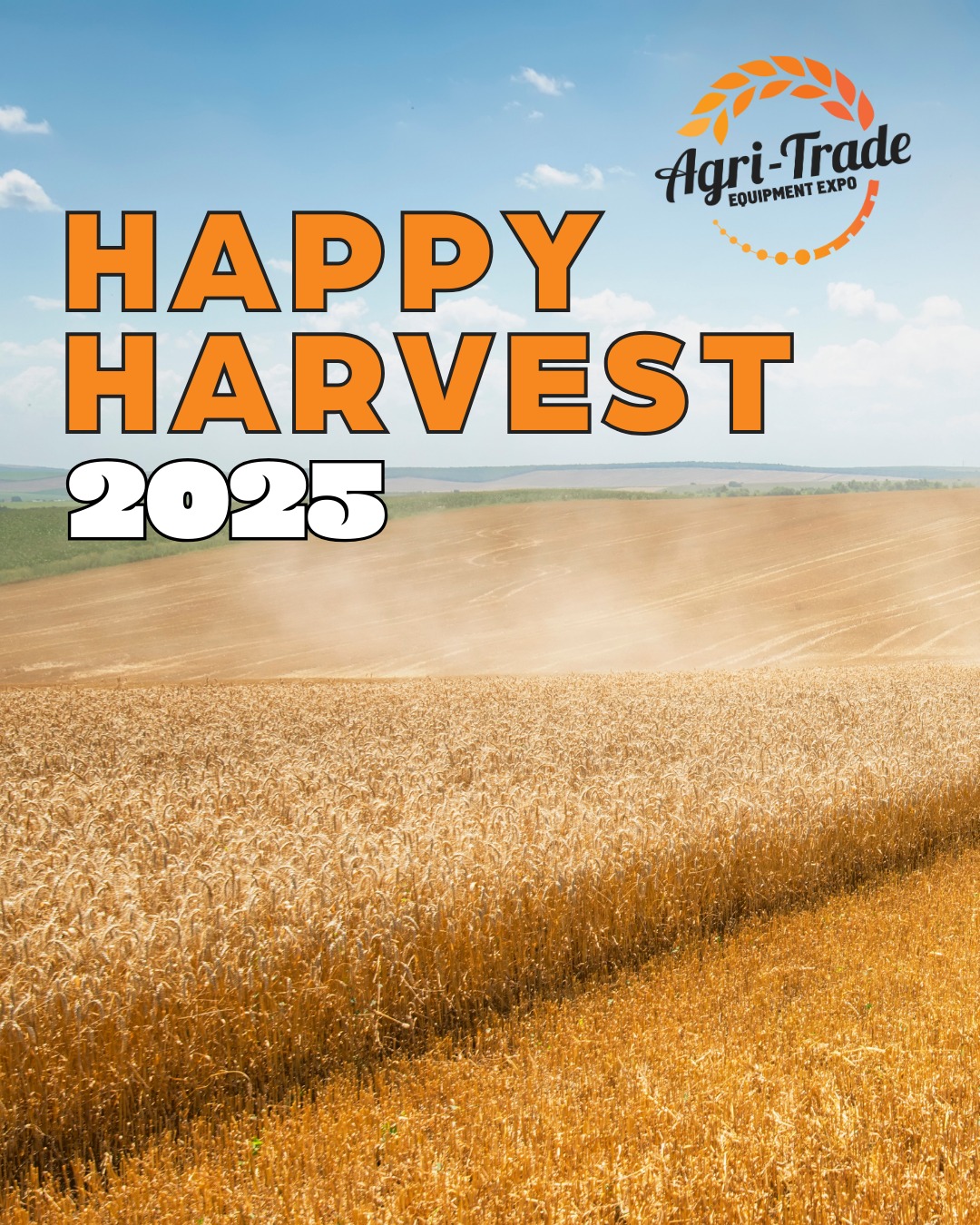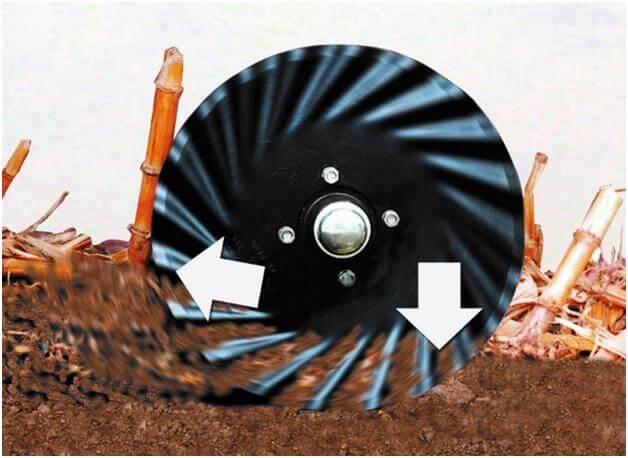
What is Vertical Tillage?
A discussion about soil tillage methods should start with the differences between traditional and vertical tillage. Each has its own advantages, disadvantages, and applications.
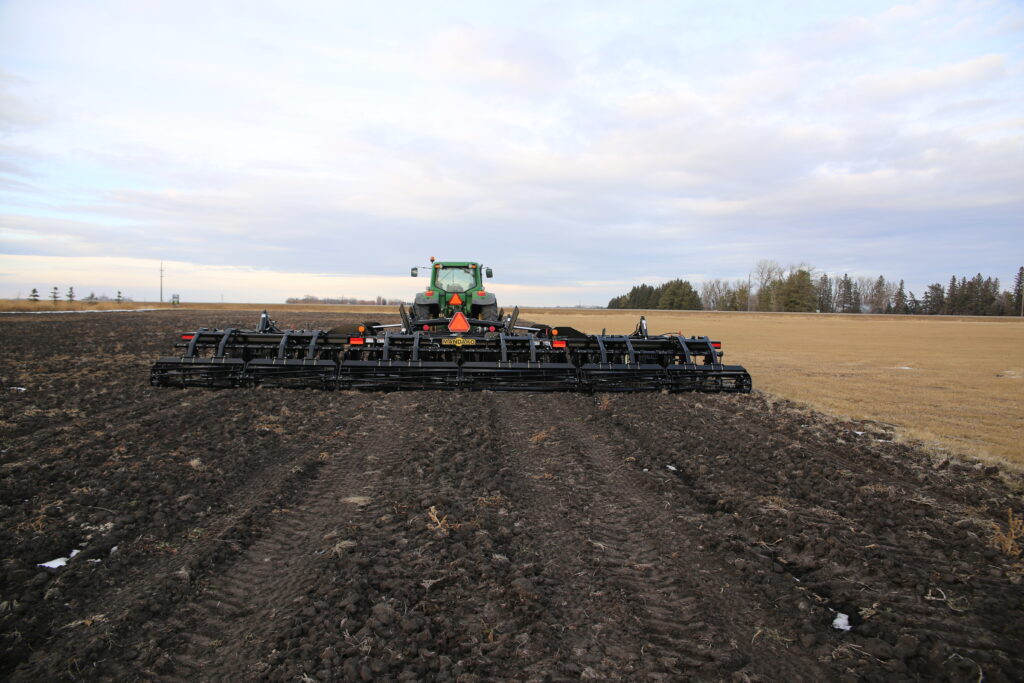
Example of vertical tillage using Mandako Storm
Main Principles and Goals of Vertical Tillage
In the process of vertical tillage, special equipment, such as discs and blades attached to a harrow, covers the topsoil with crop residues. This provides plants with significantly more nutrients. Vertical tillage retains oxygen and water in the soil. Even soil with average characteristics becomes much more fertile under these favorable conditions.
Differences from Traditional Soil Tillage Methods
Horizontal tillage leads to soil compaction, slow root system development, and the decline of beneficial microorganisms. Earthworms, for example, prefer loose soil over compacted soil, and their role in improving yield is well-documented.
Advantages of Vertical Tillage
Agronomists highlight the following benefits of this tillage method:
- Improved soil structure
- Reduced erosion

An example of soil erosion where vertical tillage is not used
- Increased water permeability
- Better conditions for the root systems of plants

SOIL STRUCTURE. Soil with good structure (left) allows for greater water infiltration and storage, whereas compacted soil (right) inhibits water movement and storage.
Additionally, the need for fertilizers decreases, leading to healthier food production and reduced use of both natural and chemical fertilizers.
Key Equipment for Vertical Tillage
Proper use of disc implements and chisel plows is essential. Universal seeding complexes for vertical tillage have also been developed. These tools ensure movement strictly perpendicular to the soil. After tillage, there are no compacted layers, allowing roots to grow deeper.
Making the Right Choice
Choosing the right equipment can be challenging. Our experts are always ready to assist you. Contact them on our website with any questions about equipment selection based on soil type, plot size, climate conditions, and other factors. We will analyze each factor to ensure your yields increase year after year. Our methods are based on the latest scientific research in agronomy and supported by extensive practical experience.
Examples of Popular Models and Manufacturers
Examples of popular models and manufacturers include the Mandako STORM and Mandako Chisel Flex. The Mandako STORM adapts to various conditions, making it flexible and innovative. It prepares the seedbed well and retains more moisture in the soil.
The Mandako Chisel Flex redefines cultivation with its:
- Innovative design
- Durability
- Adjustable bending points
- Floating hitch
Practical Aspects of Vertical Tillage
To choose the right equipment, consider the type of seed, soil type, plot size, and climate conditions. Read more interesting materials in our blog, and if you have any questions, our Mandako experts are always available to provide advice on both equipment and accessories, such as discs and blades of various types.
Optimal Conditions and Timing for Work
Depending on the crop, specific timings for tillage are recommended, considering air and soil temperatures. Vertical tillage is especially suitable for autumn work, preparing for winter crop planting. These crops should not be sown too early to avoid premature germination.
All the advantages and possibilities of vertical tillage contribute to improved soil quality and higher seed germination rates. Plants receive more water and air, and the soil constantly hosts beneficial microorganisms and earthworms. On fertile soil, there is no need for large amounts of chemical fertilizers, allowing for the use of organic options.
Future Prospects of Vertical Tillage Technology
Vertical tillage creates an optimal environment for plant growth even in regions with cold climates. In the future, this technology and its equipment will become increasingly advanced. Innovations are expected to improve maneuverability, flexibility, and soil treatment quality without harming the soil. The primary goal will always be to retain moisture in the soil for proper plant nutrition. New equipment, designed with existing experience in mind, will emerge accordingly.
FAQs:
- What is vertical tillage? Vertical tillage is a soil management practice that uses specialized equipment to improve soil structure, water retention, and nutrient availability for crops.
- How does vertical tillage differ from traditional tillage? Unlike traditional horizontal tillage, which compacts soil and hinders root growth, vertical tillage maintains loose soil, promoting better root development and microbial activity.
- What are the benefits of vertical tillage? Benefits include improved soil structure, reduced erosion, increased water permeability, and better root conditions, leading to healthier crops and reduced fertilizer needs.
- What equipment is used for vertical tillage? Key equipment includes disc implements, chisel plows, and universal seeding complexes that ensure movement perpendicular to the soil, preventing compaction layers.
- Why is vertical tillage important for future agriculture? Vertical tillage creates optimal growth conditions even in cold climates, with innovations expected to enhance equipment flexibility, maneuverability, and soil treatment quality, all aimed at preserving soil moisture and health.
Date: May 22, 2024 Estimated Reading Time: 8 minutes

